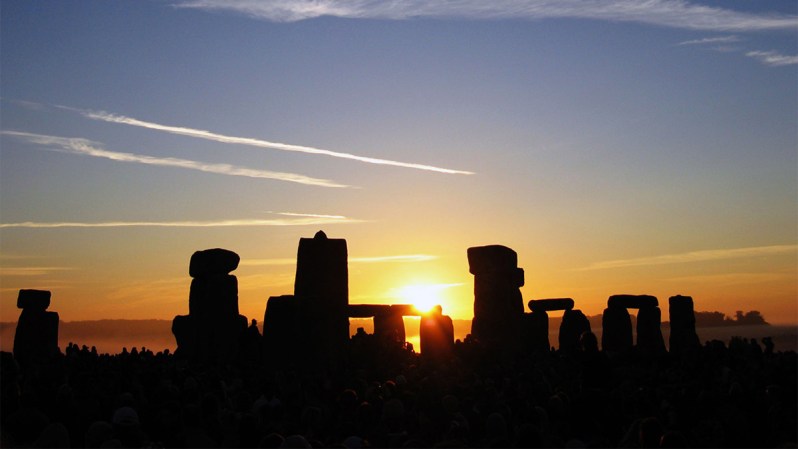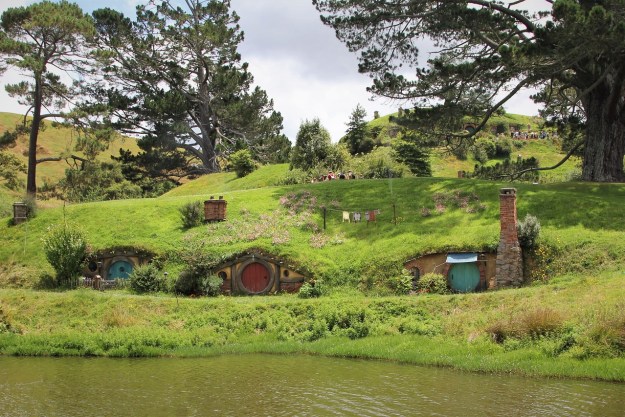
What exactly is the summer solstice?
In short, the summer solstice — which occurs at 6:07 a.m. on June 21, 2018 — marks the official astronomical beginning of the summer season for the Northern Hemisphere (in meteorology, the season begins a bit earlier on June 1). The solstice happens when the sun is directly above the Tropic of Cancer. From Earth, this is when the sun reaches its northernmost position in the sky.
Because the solstice increases sunlight in the Northern Hemisphere and ushers in the heat of summer, you may reason that this is when the sun is closest to this region of the Earth. In fact, the solstice has nothing to do with Earth’s distance from the sun — the key factor is the Earth’s tilt on its axis. Because of the way our planet sits on its north-south axis, more sunlight reaches the Northern Hemisphere at solstice time than at any other point in the year. For the Southern Hemisphere, which is tilted away from the sun this time of year, our summer solstice marks their winter solstice (when December rolls around, the opposite will be true as we move into our official winter season).
Why Does the Summer Solstice Matter?
It Has Both Historical and Modern-Day Significance
While you may not mark the summer solstice with a dedicated celebration every year, it has had tremendous influence on different cultures throughout human history. One of the most notable examples of this is Stonehenge, whose design is such that if you stand at its center during the solstice, you can watch the sun rise over the Heel Stone and perfectly hit the center of the Altar Stone. Of course, no one knows for sure why Stonehenge was originally created, but its layout seems so deliberately designed to embrace the solstice that it must have played some role. To this day, thousands of people gather at Stonehenge each year to celebrate the moment of solstice and marvel at the precision of its design. The design of The Great Pyramids in Egypt also seems to have taken the summer solstice into account; to this day, if you view the solstice sun from the Sphinx, you’ll see it set directly between two of the pyramids.

When you consider exactly what the coming of the summer solstice means — especially for agriculture — it’s no surprise that ancient cultures would have seen it as an important time of year. To this day, the solstice is still a critical time of year for American farmers because of its significance in the growing season. As daylight hours slowly wane post-solstice, crops begin to mature and farmers begin preparations for harvest. While we may no longer build monuments to celebrate the coming of the summer season, it continues to play a vital role in our survival and our traditions.
There are still some communities in the United States that mark the solstice with ceremonies and celebrations. In Fairbanks, Alaska, where the solstice can bring up to 22.5 hours of straight sunlight, the event is marked each year with a late-night baseball game (a tradition that has been going strong for over 100 years). In New York, yoga enthusiasts gather to strike poses in Times Square under the extended daylight hours. In Seattle, an annual Solstice Parade takes place on or near the day of the solstice. In Northern Europe, the beginning of the summer season is even more heavily celebrated, with festivals, bonfires, and beautiful floral decorations. What a great excuse to take that European vacay you’ve been dreaming of!
It’s Something We All Experience
The summer solstice is a rare and remarkable moment of global continuity: because it occurs precisely when the sun sits over the Tropic of Cancer, it happens at the exact same time all over the world. In addition to connecting all us Earthlings in one specific moment, solstices are something we share with our solar system neighbors.

These planets experience similar events — in fact, in a rare case of astronomical coincidence, Mars experienced a solstice within just a few days of our own in 2008. Uranus also experiences solstices, though they’re much more extreme than ours. Each pole on the planet experiences 42 years of sunshine followed by 42 years of darkness. For other planets, like Jupiter, the position of their poles relative to their orbits makes solstices almost imperceptible.
It Means Summer is Coming
Though our daily schedules may make us inclined to view the solstice as taking place in the middle of summer, it serves as a great reminder that summer is just beginning. Just as May and June are winding down, the solstice ushers in the true heat of the season. Because we tend to think of May as the beginning of summer, the solstice’s reminder is almost like getting a whole second wave of the season.
The arrival of the summer solstice can also give you some key insights into astronomical phenomena heading your way. The further north you are during the solstice, the more sunlight you’ll get, and if you happen to live within 60 miles north of the Arctic Circle, the sun will never set for you at all during the solstice. While most places don’t experience their earliest sunrise or latest sunsets exactly on solstice day, it’s still a good indicator of when your area will experience these extremes. Earliest sunrises typically take place a few days before the official solstice, and latest sunsets a few days after. Even though solstice day may not be your earliest sunrise or latest sunset of the year, that doesn’t mean you won’t get extra rays. For everyone in the Northern Hemisphere, the summer solstice is the longest day of the year, in the sense that it’s the day with the most hours of sunlight. That means if you time it right, you can enjoy the sunny outdoors (or maybe just the view of them from the safe confines of your A/C) for longer on solstice day than any other day of the year.

The solstice also lets you know that you can look forward to the doggiest days of summer several weeks (or months, depending on your location) afterward. This is due to the delay in how long it takes the planet’s oceans and land masses to warm up after receiving their peak dose of sunlight. Ocean water is especially slow to heat up, so areas that are close to water can expect the hottest day of the year to hit later in summer – in August or even September.
If you’re a fan of twilight (no, not the sparkly vampire series), you might appreciate that the solstice results in extra light before sunrise and after sunset. Be sure to stay safe, though — the UV index skyrockets during solstice time, which means it can be a lot easier to get a sunburn even early in the morning or late into the evening.
So, while you might not be able to make it to Stonehenge for this cosmic celebration, it’s still worth an early rise this Thursday, June 21 to soak up some extra sun and appreciate exactly what the event means for our history, our planet, and our seasons. Who knows, maybe you can even start your very own summer solstice tradition.
Editors' Recommendations
- Make shopping easy: The best gifts for men (no matter what he’s into)
- 7 Summer Date Ideas that Are More Creative than Just Grabbing Drinks
- Music for the Dog Days of Summer
- What Is the Winter Solstice and Other Common Questions Answered About the Longest Night of the Year
- 8 Best Movies to Watch this Summer for a Day Out of the Sun


